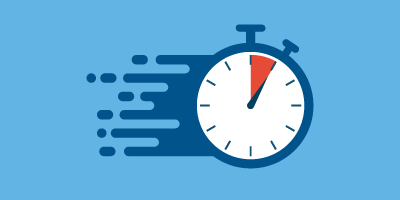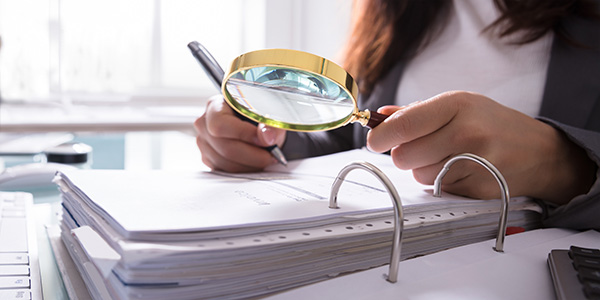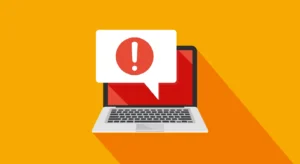Effective invoice validation is a safeguard against financial errors and crucial for business integrity. Knowing the right validation techniques is essential to minimize the risk of errors, crackdown on invoice fraud, and meet compliance demands. This article focuses on the benefits of transitioning from manual checking to streamlined, automated invoice validation systems, providing insights to overhaul and fortify your invoice processing.
Key Takeaways
- Manual invoice validation introduces high risks of errors, time inefficiencies, and fraud, with a notable 3.6 percent of manually processed invoices containing inaccuracies that lead to compliance issues and potential fraud.
- Automated invoice validation significantly enhances efficiency, accuracy, and supplier trust and ensures compliance with less effort by integrating AI and predefined rules, improving workflows, and reducing manual labor.
- To successfully implement an automated invoice validation system like DataServ’s solution, it’s essential to analyze the current invoicing environment, streamline invoice formats, and properly train all departments involved in the transition.
The Perils of Manual Invoice Validation
The traditional route of validating invoices manually is akin to a precarious tightrope walk, fraught with pitfalls. Manually scrutinizing each invoice is a time-consuming process that leaves ample room for errors, potentially leading to compliance issues and even fraud.
The gravity of these challenges is underscored by the fact that, within manual validation workflows, an alarming 3.6 percent of invoices contain inaccuracies. Moreover, a staggering 25 percent of these errors frequently go unnoticed, resulting in incorrect financial data and potential compliance issues. This has prompted countries like France to enforce the use of electronic invoices in order to streamline controls and deter fraud.
The Heavy Cost of Time-Consuming Tasks
The process of manually validating invoices is both lengthy and burdensome. On average, businesses devote around 12 minutes per invoice to this task and can only validate five invoices within an hour. This slow pace often leads to missed regulatory deadlines and puts a strain on available resources.
The lack of standardization in invoice formats from suppliers adds to inefficiencies and leaves room for potential fraudulent activities. As a result, relying solely on traditional manual methods drains time and resources while hindering the establishment of streamlined financial operations.
Manual Errors: A Gateway to Compliance Issues
Manual invoice validation poses a risk not only for financial errors but also for compliance with regulations. The use of manual systems increases the likelihood of non-compliance, which can result in penalties and harm to reputation.
To comply with regulations, it is crucial to have traceability of invoices, especially as companies grow larger. Implementing measures such as an Electronic Data Interchange (EDI), along with maintaining reliable audit trails, are essential steps to ensure this traceability during audits.
Fraud Risks in the Manual Process
The current manual invoice validation process is highly vulnerable to fraud due to its numerous loopholes. The lack of robust security measures and controls leaves room for fraudulent activities such as inflated, duplicate, or completely false invoices.
The ease with which manual processes can be manipulated increases the risk of payments being made to incorrect vendors or multiple times, emphasizing the crucial need for thorough validation in order to prevent fraud and discourage unauthorized transactions from taking place.
Advantages of Automated Invoice Validation
Emerging from the shadows of manual validation, automated invoice validation offers a beacon of hope for businesses plagued by the perils of manual processes. With automated validation, companies can experience a quantum leap in efficiency, improve supplier relationships, and achieve regulatory compliance with relative ease.
Imagine an efficient world where:
- Purchase order invoices are effortlessly processed
- Invoices undergo validation seamlessly
- Supplier invoices are consolidated to minimize errors
- Special charges like taxes and freight are accurately encoded and transferred to the ERP system
- Precise invoices are promptly directed to the appropriate staff for approval
This is not a distant dream but a reality made possible by automated invoice validation.
Boosting Efficiency with Automation
The use of automated invoice validation offers a significant advantage by greatly enhancing efficiency. By reducing the need for manual work, the time-consuming and labor-intensive nature of the validation process is minimized, leading to quicker processing of invoices.
Automation accelerates each step in the invoice validation process, from data extraction and verification to approval. This results in several benefits, such as minimizing errors, fraudulent activities, and duplicate payments and simplifying audits while also promoting smooth workflow processes that optimize cash flow for businesses.
By streamlining operations through automation, companies can fully realize these advantages within their invoicing system.
Solidifying Supplier Relationships Through Accuracy
Establishing trust is essential in the business world, a concept that also applies to supplier connections. Precise and prompt invoice validation plays a crucial role in cultivating a foundation of trust with suppliers.
The use of automated invoice validation offers numerous advantages.
- It guarantees accuracy and timeliness when processing invoices.
- It serves as evidence of an organization’s dedication to maintaining professional partnerships with its suppliers.
- It strengthens trust and promotes healthy business relationships.
Achieving Compliance with Minimal Effort
In manual processes, compliance can be a daunting task when it comes to invoice validation. The use of automated systems for this purpose addresses the challenge effectively by incorporating functions that ensure adherence and validity through seamless integration.
An efficient system for automated invoice validation relies on AI-based OCR technology to automate the entire process while capturing relevant data from invoices and conducting thorough checks according to predefined rules and regulations. This results in timely visibility, simplification of payment workflows, and reduction of exposure to potential compliance issues, all contributing to effortless achievement of key compliance standards for your business.
Key Components of an Effective Invoice Validation System
A successful invoice validation process must be tailored to meet the specific needs of each organization rather than adopting a one-size-fits-all approach. There are several important factors that define an effective system for validating invoices, including seamless integration with accounting software, personalized criteria for verification, and access to real-time data and control.
These components do not function independently. They work harmoniously in order to create a powerful, streamlined, and dependable method of invoice validation. Let’s explore these elements. In detail and understand their significance within the overall validation procedure.
Integration with Accounting Software
Seamless integration with accounting software is a crucial aspect of an efficient invoice validation system. This allows for consistency in financial records, reduces the need for repetitive data entry, and automates the approval process, resulting in improved overall efficiency.
Integrating with accounting software has several advantages, such as minimizing errors, streamlining the entire workflow of invoice validation, and automating processes to expedite validations, approvals, and payments. It also ensures uniformity across all financial documents, saving time and effort associated with manual tasks. Ultimately, this leads to benefits such as increased accuracy in record keeping and enhanced efficiency within the accounting system.
Customized Validation Criteria
A reliable invoice validation system must have the following features:
- The ability to adapt to a company’s specific needs and requirements.
- Tailored criteria for validation based on factors like industry, size of business, and particular demands.
- Improved accuracy and dependability in processing invoices.
By incorporating these characteristics, organizations can enhance their invoice validation process.
Customized criteria for validation have several advantages, including:
- Ensuring better quality of data.
- Preventing errors.
- Maintaining consistency in data.
- Facilitating informed decision-making processes.
Real-Time Data Access and Control
In today’s fast-paced business world, it is essential to have access to and control of real-time data. This allows for quicker decision-making, better teamwork, and increased transparency.
By having immediate access to real-time data, companies can quickly see the status of their invoices. This results in prompt payments being made and efficient management of cash flow processes, such as tracking pending payments and optimizing payment schedules. Additionally, the ability to control data in real-time promotes collaboration by ensuring the accuracy of information, leading to faster processing times for invoices, which ultimately boosts productivity within businesses.
Implementing DataServ’s Automated Solution
Switching to an automated invoice validation system through DataServ can provide numerous benefits for your business. It is important to follow a three-step approach when implementing this solution:
- Assessing your current invoicing process
- Standardizing invoice formats
- Training relevant departments
While the task of transitioning may seem overwhelming at first glance, the advantages in terms of improved efficiency, accuracy, and cost-effectiveness make it worthwhile. Let’s delve into each step in more detail.
Analyzing Your Current Invoicing Environment
In order to begin the process of automating invoicing, it is important to first assess your current invoicing system. This assessment should include a thorough evaluation of the following components: invoice flow, channels used for sending and receiving invoices, suppliers involved in the process and any tools currently being utilized.
This evaluation will ensure that transitioning to an automated system goes smoothly. The assessment itself should involve several steps, such as standardizing invoice templates, creating a detailed outline or chart of how invoices are processed step-by-step, and implementing software specifically designed for automated invoice processing. Utilizing various methods for managing invoices can also greatly benefit this validation process.
By carefully examining your existing invoicing environment and pinpointing areas where improvements can be made prior to automation implementation, you lay a solid foundation that promotes seamless integration with new processes such as validated automatic payments.
Streamlining Invoice Formats for Uniformity
After assessing your current invoicing system, the next step is to streamline your invoice format. Standardizing it has several benefits, such as simplifying the validation process, reducing errors, and ensuring consistency throughout the organization.
The steps involved in standardizing an invoice format are:
- Using standardized templates for a more professional look
- Implementing approval processes based on departments or locations
- Automating invoicing through billing software
- Championing electronic payments to speed up payment procedures.
- Reviewing and updating invoices regularly according to organizational changes
Standardization of invoice formats can greatly facilitate smooth and efficient validation processes by providing consistency across all levels.
Training Departments Involved in the Transition
The successful implementation of an automated invoice validation system heavily relies on the users involved in the process. It is crucial to conduct training for all departments participating in the transition. This training should cover important aspects such as:
- Assigning mentors to provide guidance and support
- Establishing clear policies and guidelines
- Offering consistent training sessions and ongoing assistance
- Conducting regular evaluations of performance
- Implementing quality control measures
Department members need thorough instruction on DataServ’s automated solution features, including:
- Workflow Path utilization
- AutoVouch functionality
- Mobile capabilities
Case Studies: Transforming Businesses with Automated Invoice Validation
The potential impact of automated invoice validation is widely accepted, but it can be best understood through real-life examples. In this regard, we will analyze two case studies that highlight the practical advantages of adopting such technology.
These success stories serve as proof of how significant enhancements in efficiency, accuracy, and cost reduction are possible by implementing automated invoice validation systems instead of relying on manual methods. This transition brings tangible improvements in these key areas and demonstrates the concrete benefits that come with embracing automation for validating invoices.
From Chaos to Control: A Retail Giant’s Journey
Take, for instance, the case of a supermarket chain that transitioned from manual to automated invoice validation. The transition resulted in:
- A remarkable 80 percent time-saving
- Advanced inventory management
- Streamlined workflows
- Improved three-way matching
- Cost savings
- Punctual invoice payments
This transformation paints a vivid picture of how a chaotic and labor-intensive invoice validation process can be transformed into a streamlined, efficient system using automated solutions like DataServ’s. The success of this retail giant serves as a testament to the power and potential of automated invoice validation.
The Efficiency Leap: How a Manufacturing Firm Cut Costs
A successful transition to automated invoice validation resulted in significant cost reduction and improved efficiency for a manufacturing company. By implementing DataServ’s solution, they were able to reduce labor costs associated with processing invoices by 78 percent, leading to immediate savings and return on investment.
The adoption of this automation led to a 60 percent decrease in missing invoices and resolved bottlenecks within accounts payable and receivable processes. These real-life examples demonstrate how businesses can overcome the challenges posed by manual invoice validation through effective strategies and adopting suitable solutions, ultimately reaping the benefits of automation.
Summary
Transitioning from manual to automated invoice validation has the potential to greatly enhance efficiency, precision, and cost-effectiveness in financial operations. By incorporating crucial elements such as integration with accounting software, personalized validation standards, and immediate access to real-time data for monitoring and management purposes, companies can simplify their process of invoice verification. The adoption of a solution like DataServ’s services makes this transformation possible, proven by the success stories from both a retail giant and a manufacturing company. Take advantage of automation today for an organized approach to managing your invoicing processes effectively.
Frequently Asked Questions
How do you validate an invoice?
Validating an invoice involves confirming vendor and invoice details, cross-verifying with purchase orders, confirming receipt of goods or services, and obtaining necessary approvals before scheduling payment. Always make sure to resolve any discrepancies during the process. By resolving discrepancies earlier in the process, you prevent risks associated with incorrect data in your ERP.
Why is invoice validation important?
Validation of invoices is a crucial process as it guarantees the correctness and reliability of invoices. This helps organizations in identifying and preventing any mistakes, deceitful activities, or inconsistencies that may adversely affect their financial stability. Invoices are contracted liabilities and that financial information ends up in your system of record – therefore it must be accurate.
What is billing validation?
Invoice validation is a crucial procedure that verifies the accuracy of billing data by cross-checking it with historical and statistical information or other preferred sources. This process plays an important role in ensuring invoice precision and reducing errors.
The main goal of this validation is to monitor the invoicing system thoroughly, thus guaranteeing that all invoices are accurate without any mistakes by comparing various forms of data.
What are the main drawbacks of manual invoice validation?
Manual invoice validation can be a lengthy process, which makes it vulnerable to errors that can potentially result in compliance problems. The manual nature of this method increases the risk of fraud being overlooked.
When assessing invoice validation procedures, it is crucial to take into account these downsides. The time-consuming aspect and proneness to mistakes may lead to difficulties in meeting regulatory requirements. Relying solely on human input leaves room for improvement.
How does automated invoice validation enhance efficiency?
The implementation of automated invoice validation results in increased efficiency through the reduction of manual tasks, faster processing times, and improved management of cash flow. This method remains crucial for verifying invoices while enhancing overall workflow and financials.







